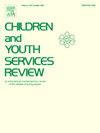Gender differences in school environment and depressive symptoms in Chinese adolescents: The multilevel mediating role of peer support
IF 2.4
2区 社会学
Q1 FAMILY STUDIES
引用次数: 0
Abstract
Depressive symptoms pose significant health challenges to adolescent development worldwide. In the ecological systems framework, factors within the microsystem, like the school environment, can directly relate to individual psychological health. Given group-level nature of school environment, this relationship is inherently multilevel: the collective dimension of school environment provides a shared context that reflects cumulative school-wide factors, which, in turn, are linked to individual outcomes. While previous research explored the direct link between school environment and depressive symptoms, much less is known about the multilevel mediating mechanisms involved. This cross-sectional study utilized a dataset from 13,239 adolescents (50.8 % female; Mage = 13.435, SD = 0.964) across 85 Chinese schools collected in 2021–2022. Based on Multilevel Structural Equation Modeling (MSEM) with random slopes, a 2–1-1 multilevel mediating model was employed to investigate peer support’s mediating role between group-level school environment and depressive symptoms. Results showed a negative association between group-level school environment and depressive symptoms, mediated by peer support. Gender differences revealed stronger direct and indirect correlations for females. The findings emphasize fostering positive broad school environments and promoting individual peer support in combatting depressive symptoms, especially for female adolescents.
中国青少年学校环境与抑郁症状的性别差异:同伴支持的多层次中介作用
抑郁症状对全世界青少年的发展构成了重大的健康挑战。在生态系统框架中,微系统内的因素,如学校环境,可以直接关系到个体的心理健康。鉴于学校环境的群体层面性质,这种关系本质上是多层次的:学校环境的集体维度提供了一个反映全校范围内累积因素的共享背景,而这些因素反过来又与个人结果相关联。虽然以前的研究探索了学校环境和抑郁症状之间的直接联系,但对所涉及的多层次中介机制知之甚少。这项横断面研究使用了来自13239名青少年的数据集(50.8%为女性;Mage = 13.435, SD = 0.964),在2021-2022年收集的85所中国学校中。基于随机斜率的多水平结构方程模型,采用2-1-1多水平中介模型考察同伴支持在群体水平学校环境与抑郁症状之间的中介作用。结果显示,群体水平的学校环境与抑郁症状呈负相关,同伴支持介导。性别差异显示出更强的直接和间接相关性。研究结果强调,在对抗抑郁症状方面,培养积极的广泛的学校环境,促进个体同伴的支持,尤其是对女性青少年。
本文章由计算机程序翻译,如有差异,请以英文原文为准。
求助全文
约1分钟内获得全文
求助全文
来源期刊

Children and Youth Services Review
Multiple-
CiteScore
6.30
自引率
6.10%
发文量
303
期刊介绍:
Children and Youth Services Review is an interdisciplinary forum for critical scholarship regarding service programs for children and youth. The journal will publish full-length articles, current research and policy notes, and book reviews.
 求助内容:
求助内容: 应助结果提醒方式:
应助结果提醒方式:


